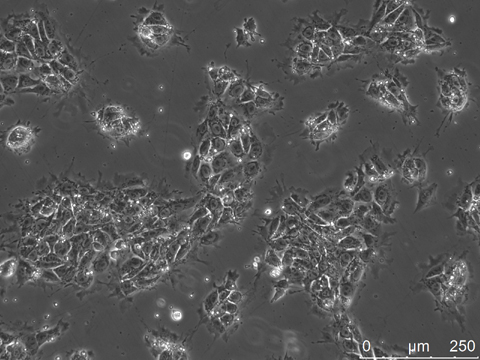
Federal government should fund research using stem cells from unfertilized eggs.
A recent article in Scientific American questioned whether research on stem cell lines derived from unfertilized eggs was too tightly regulated by the federal government. Now that technology allows the creation of stem cells without fertilization, there is no question that federal laws and guidelines are overly restrictive, causing a detrimental effect on valuable scientific inquiry.
Since 1996, Congress has included the Dickey-Wicker Amendment in the annual federal budget. This amendment was a conservative reaction to what some considered to be scientific research that showed little respect toward life.
For example, speaking to the Senate in 1996, Robert Smith (R-NH) said, “Just because a private party wants to destroy life, why should Government force taxpayers to give their blessing to that act? Let private parties use private money for their ethically challenged experiments.” Similarly, Representative Jay Dickey (R-AR) said, also in 1996, that embroyonic research was “an attack on the sanctity of life,” and pointed out that several pro-life organizations supported the amendment.
The Dickey-Wicker Amendment prohibits federal funding of either the creation of human embryos for research purposes or research in which human embryos are “destroyed, discarded, or knowingly subjected to risk of injury or death.” The amendment is sweeping in scope because the term “human embryo” is defined as “any organism…that is derived by fertilization, parthenogenesis, cloning, or any other means from one or more human gametes.”
Even the most pro-life member of Congress, however, should have no objection to stem cell research on stem cell lines created by using various techniques to “trick” a human egg into acting as if it has been fertilized. Although these cell lines, called parthenotes, develop like early-stage embryos, they lack the genetic material provided by sperm required to become a fetus. Although the key building blocks for stem cells are present, no new life is created, and therefore, no life can be destroyed by research.
Stem cell lines derived from both embryos and parthenotes have the incredible potential to be developed into various forms of human tissue or used to treat a broad array of diseases, including Parkinson’s disease, HIV/AIDS, and diabetes. Unlike adult stem cells, these lines may produce billions of pluripotent stem cells that can be directed to replace damaged cells in the spinal cord, the brain, and the heart. In the long run, parthenotes may prove to be even more valuable than stem cells from fertilized embryos for treating diseases. Parthenotes and testis cells may be used to produce stem cell lines specific to the woman or man who donated the gamete cell. All people, therefore, could carry the key to curing their own diseases or replacing their own nerves, blood, or tissue.
Although parthenotes were only a theoretical source of stem cells in 2005 when Massachusetts passed its landmark stem cell law, the law defined and treated parthenotes distinctly from fertilized embryos. The legislature recognized that, while some may have moral or ethical objections to destroying life by conducting research using embryos, no such objections could exist to parthenotes. Therefore, Massachusetts created few, if any, restrictions on research using parthenotes.
Now that parthenotes are a proven source of stem cell lines, Congress should make the same distinction.
Although President Obama’s 2009 Executive Order on stem cell research provided for greater federal funding of research on embryos that otherwise would have been discarded, such as those created for in vitro fertilization, the National Institutes of Health’s human stem cell guidelines still provide barriers to research with parthenotes. Some commenters on the draft guidelines suggested that federal funding be made available for research on cells derived from parthenogenesis. NIH refused to accept their arguments because, on its view, these stem cells “involve complex ethical and scientific issues” on which a “consensus has not emerged.”
NIH considers parthenogenesis controversial in part because it requires the donation of eggs, “a procedure that has health and ethical implications.” However, Congress’s objections were based on the preservation of life. NIH should not go searching for ethical reasons to restrict funding on valid and valuable science. Women have eggs extracted for a variety of reasons, and there is no reason to think some wouldn’t donate eggs for science. In fact, several men have offered parts of their testes to Bedford Stem Cell Research Foundation (BSCRF) for research for a multi-year study to isolate and grow testis stem cells.
The potential for medical breakthroughs utilizing stem cells is immense, but translating potential into cures has been a slow process, and a lot of basic scientific research is still needed. That is why BSCRF continues to study all potential stem cell lines – adult, embryonic, parthenogenic, and testis-derived. Like parthenotes, however, stem cells from testes will likely fall under the Dickey-Wicker and NIH funding restrictions.
Lately, raising money – even for worthy causes – has been extraordinarily challenging. The “Great Recession” has dealt a real blow to stem cell research. California-based Geron Corporation, which had been conducting the first government-approved tests to develop stem cell therapies to repair spinal cord injuries, recently stunned patients and the research community by abruptly abandoning the study. The reason the company gave was financial: in this economic climate, it was more financially prudent for the company to focus on developing cancer drugs.
The Bedford study of stem cells derived from testes will cost, conservatively, about $600,000, and Dickey-Wicker and the NIH’s regulations force BSCRF to raise all of this money from private donors. Governmental support is needed now more than ever for both basic science research and the development of stem cell based therapies.
If federal policy makers can accept that parthenotes and testis-derived stem cells are fundamentally different from fertilized embryos, it will clear the way for much-needed federal research funds. Congress should amend the Dickey-Wicker Amendment to reflect the current scientific distinctions between embryos and parthenotes, and even while waiting for Congressional action, NIH should move to update its guidelines and start funding research using parthenotes and testis-derived stem cell lines.




